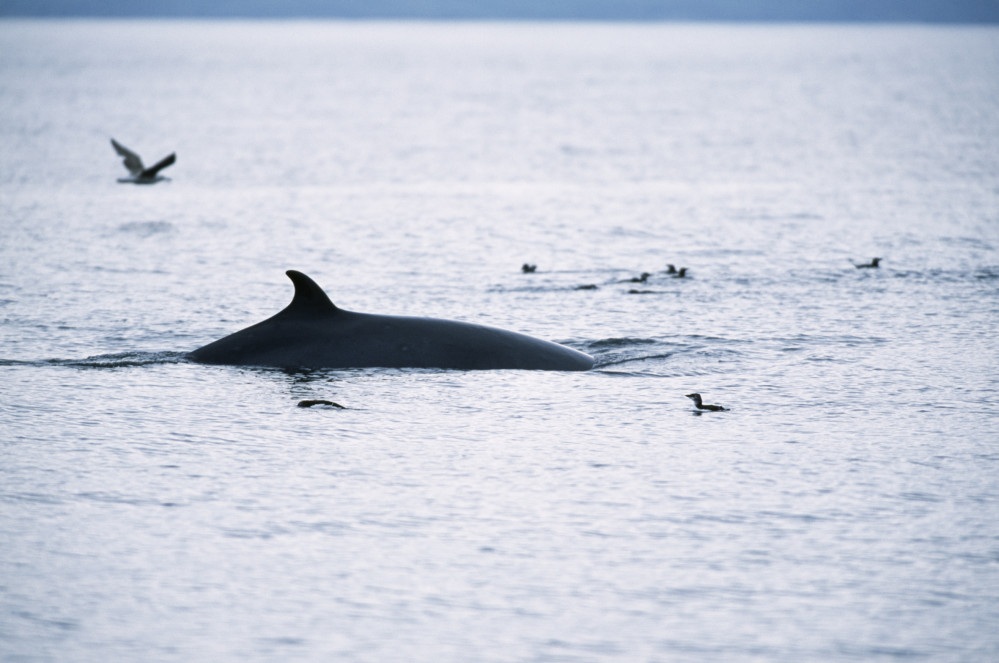Minke whale

Status
Native and seasonally common
Population
10,500
Scientific name
Balaenoptera acutorostrata
The minke whale is the most likely whale to be seen around Britain. It is the smallest member of the baleen whale family (Mysticeti). Baleen whales have two rows of flexible plates with frayed edges (made of a horn-like material) along their upper jaw that are used instead of teeth to sieve krill and plankton from the water. Baleen whales have black, dark brown, or grey backs and a broad, pointed snout. A distinctive feature is the white diagonal band on their pectoral fins. Between 50 and 70 pleats run along their throat, which allow huge volumes of water to be taken in during feeding. The flukes are rarely seen above the surface.
Baleen whales are inquisitive and often approach boats. Although they do not often bow ride, they will swim beside a vessel for some distance and can reach speeds of 12 knots over short distances.
Length: 6.8 – 8.5m (females are slightly larger than males on average)
Weight: 5 – 14 tonnes
Lifespan: 40 – 50 years
Reproduction
Mating takes place from January to May and most calves are born around December. Females produce a single calf that is weaned at 4 – 6 months, the youngest known weaning age for baleen whales.
Diet
Krill and schooling fish, including sandeels, herring, sprat and capelin.
Habitat
Over the continental shelf, often very close to land. Minke whales will sometimes enter estuaries or bays.
Predators
Killer whales
Threats
Bycatch, commercial whaling and pollution.
Status & conservation
Native and seasonally common. It is a UKBAP priority species and is legally protected in British, Irish and European waters.
Population size & distribution
UK population 10,500 (North Sea, English Channel and Celtic Sea). Population trend is unknown but there is an indication that the population increased during the 1980s and ‘90s. They are frequently seen in northern and western coastal waters of the UK and are common throughout the Sea of Hebrides.
Did you know?
In Scottish waters, minke whales are sometimes seen at the surface feeding beneath flocks of auks, Manx shearwaters and gulls in late summer.
